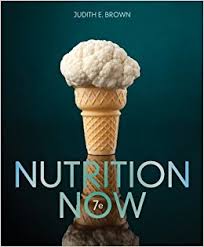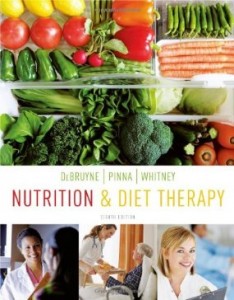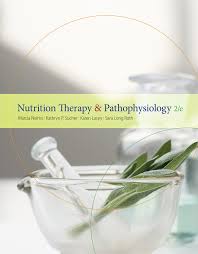Test Bank For Nutrition Now 7th Edition by Judith E. Brown
Original price was: $115.00.$50.00Current price is: $50.00.
Test Bank for Nutrition Now, 7th Edition by Judith E. Brown provides students with a solid foundation in nutrition, teaching them the basic concepts they need to know to make informed decisions about their diet and health. The Test Bank includes all of the chapter tests as well as a final exam, so students can gauge their understanding of the material and identify any areas where they need further study.
In addition, the Test Bank provides answer keys for all of the questions, so students can check their work and ensure that they are on the right track. With its comprehensive coverage and helpful resources, the Test Bank is an essential tool for any student who wants to excel in nutrition.
Digital item No Waiting Time Instant Download
ISBN-10 :1133936539ISBN-13 :978-1133936534
Description
Test Bank For Nutrition Now 7th Edition by Judith E. Brown
Test Bank for Unit 3 – Ways of Knowing about Nutrition
True/False
1. _____ The hypothesis is a statement that will be tested by research.
2. _____ Epidemiological studies prove cause and effect relationships.
3. _____ In a double-blind procedure, the researchers know who is receiving the placebo, but the subjects do not know.
4. _____ An accurate method for collecting data must be used or the results of the study will be invalid.
5. _____ Human subjects do not have to provide their consent before researchers can include them in a study.
6. _____ The Federal Trade Commission (FTC) has authority to remove television reports and Internet articles making false claims.
7. _____ Registered/licensed dieticians and certified/licensed nutritionists are reliable sources of nutrition information.
8. _____ Nutrition research is only conducted by people or companies that do not have a stake in the results.
9. _____ Subjects in a study who receive the treatment being tested are in the control group.
10. _____ Discussing misleading or fraudulent opinions about nutrition with others is protected by the freedom of speech provisions in the United States constitution.
11. ______ The most reliable nutrition experts are those who have specific education and certifications establishing their mastery of knowledge about the science and practice of nutrition.
Matching
|
1. _____ cause-and-effect relationship 2. _____ clinical trial 3. _____ control group 4. _____ double-blind procedure 5. _____ epidemiological study 6. _____ experimental group 7. _____ hypothesis 8. _____ meta-analysis 9. _____ placebo 10. _____ placebo effect 11. _____ statistically significant |
a. research that seeks to identify conditions related to particular events within a population b. subjects in a study who do not receive the active treatment c. a statement made prior to initiating a study of the relationship sought to be proved d. changes in health or perceived health that result from expectations that a “treatment” will produce an effect e. subjects in a study who receive the treatment f. a study designed to test the effects of a treatment or intervention on a specific biological event g. a finding that demonstrates that a condition causes a particular event h. an analysis of data from multiple studies i. an inactive treatment or “sugar pill” j. research findings that likely represent a true or actual result and not one due to chance k. a study in which neither the subjects nor the researchers know which subjects are receiving the active treatment and which are receiving an inactive one |
Multiple Choice: Choose the one best answer.
1. Which of the following is protected by the U.S. constitution?
a. A professor’s opinion about a particular nutrient supplement
b. Fraudulent statements made about a dietary supplement in an advertisement
c. A product label with a misleading nutrition claim
d. Sending fraudulent information and/or receiving payment for a bogus nutritional product through the U.S. or Canadian postal service
2. A clinical trial is research designed to:
a. test the effects of a treatment on a specific biological event in humans by using experimental and control groups.
b. study the relationship between events in a population and specific health conditions.
c. examine the effect of an event in animal populations.
d. use case histories to derive scientific conclusions.
3. The number of subjects needed in a study:
a. is determined by a mathematical formula.
b. should be large enough to exclude differences between the control and experimental groups due to chance.
c. should be kept small so that the data are manageable and there is less room for statistical error.
d. a and b
e. a and c
4. Statistically significant results from a research study:
a. can only be determined by using the appropriate statistical tests.
b. mean that the test results are probably not due to coincidence or chance.
c. are used to measure the accuracy of the hypothesis.
d. All of the above
5. People believe nutrition nonsense and buy fraudulent nutrition products for which of the following reasons?
a. Laws that govern truth in advertising are often not enforced and misleading information is widespread.
b. Many people tend to believe what they see in print.
c. People are looking for a quick fix to a complex problem.
d. All of the above
6. A study in which neither the subjects participating in the research nor the scientists performing the research know which subjects are receiving the treatment and which are getting the placebo is known as _____.
a. a double-blind study
b. a half-blind study
c. a confidential study
d. a crossover study
7. Which of following people would be the most legitimate source for nutrition information?
a. A student who has taken a nutrition class and calls himself a nutritionist
b. A registered dietician working in a clinical setting
c. An Internet blogger with great advice on dietary supplements
d. A salesperson at a dietary supplement store
8. A college student who has been feeling fatigue decides to take an energy-boosting supplement advertised on a television infomercial and endorsed by a professional athlete. She reports feeling more energetic after taking the supplement but later discovers the supplement is only made of salt. What did the student experience?
a. The effectiveness of the energy supplement working in her body
b. The placebo effect: the student believing the supplement was working to increase energy
c. An increase in nerve conduction caused by the salt tablet
d. An increase in blood pressure
9. The statement, “Low vegetable and fruit intake is correlated to the development of cancer” is an example of _____.
a. statistical significance
b. an association
c. cause and effect
d. a control effect
10. On a 30-second T.V. commercial, a professional football star claims a particular sports drink improves his athletic endurance by boosting his energy level. This is an example of _____.
a. truth-in-advertising
b. a bogus product
c. a testimonial
d. reliable nutrition information
11. Which of the following terms in an advertisement should raise a warning flag in your head as to the validity of the product?
a. Miraculous
b. Detoxify
c. Secret formula
d. Immune boosting
- All of the above
12. It is illegal to convey misleading nutrition information in which of the following ways?
a. Magazine or newspaper articles
b. Internet articles
c. Television programs
d. Product advertisements
13. What government agency polices bogus health products and services?
a. The Food and Drug Administration (FDA)
b. The Federal Trade Commission (FTC)
c. The U.S. Department of Agriculture (USDA)
d. The U.S. Postal Service (USPS)
14. Which of the following situations confuses consumers about nutrition?
a. Oversimplified nutrition research results
b. Media that sensationalize nutrition research findings
c. Conflicting research reports on a particular nutrient’s benefits or side effects
d. All of the above
15. What is the safest way to make decisions about your personal nutrition?
a. Trial and error – see what works best for you
b. Scientific evidence – understanding the facts
c. Recommendations from others who experience similar health problems – testimonials
d. Staying up with trends of the food and nutrition industry – popular opinion
16. “Nutrition remedies” that health practitioners believe are effective
a. are always safe to use based on the prescribed dosage.
b. are effective if used properly.
c. have been researched extensively and proven effective.
d. may not be scientifically proven to be safe or effective.
17. Which of the following professionals could have embedded beliefs about diet or health?
a. A board-certified medical doctor
b. A registered dietitian
c. A university professor
d. All of the above
18. Reliable sources of nutrition information:
a. do not exist.
b. provide information about the most recent dietary trends.
c. provide information on the consensus of scientific opinion.
d. have embedded beliefs about nutrition and have a profit motive.
19. Which of the following is a reliable source of nutrition information?
a. Nonprofit health organizations
b. Scientific organizations
c. Registered dietitians
d. All of the above
20. Which of the following provides reliable nutrition and health information online?
a. A private company that sells high-quality nutritional supplements
b. A professional fitness trainer that has “scientifically proven” specialized weight gainer supplements for sale on a website
c. Government health agencies’ web sites
d. Students that use university web servers to promote health products
e. b and c
21. What qualification does a registered dietitian (RD) have?
a. Attained a mastery of knowledge about nutrition
b. Acquired appropriate clinical practice in dietetics
c. Obtained a passing mark on a national examination
d. All of the above
22. A licensed nutritionist is a qualified nutrition practitioner that
a. is not licensed to practice nutrition counseling.
b. is licensed by the state to practice nutrition counseling.
c. is not registered by the state to practice nutrition counseling.
d. is guaranteed to be a registered dietitian.
23. Which of the following research steps comes first?
a. Human subjects approval for research
b. The research question
c. Submitting the research for publication
d. The research design
24. Research that identifies conditions related to a particular event within a population is called:
a. an epidemiological study.
b. a meta-analysis.
c. a double-blind study.
d. a clinical trial.
25. Research that tests the effects of a treatment or intervention on a group of subjects is called:
a. a meta-analysis.
b. a clinical trial.
c. an epidemiological study.
d. a double-blind study.
26. A group of subjects that receives “the placebo” as a part of research is called the:
a. experimental group.
b. placebo group.
c. control group.
d. hypothesis group.





Be the first to review “Test Bank For Nutrition Now 7th Edition by Judith E. Brown”